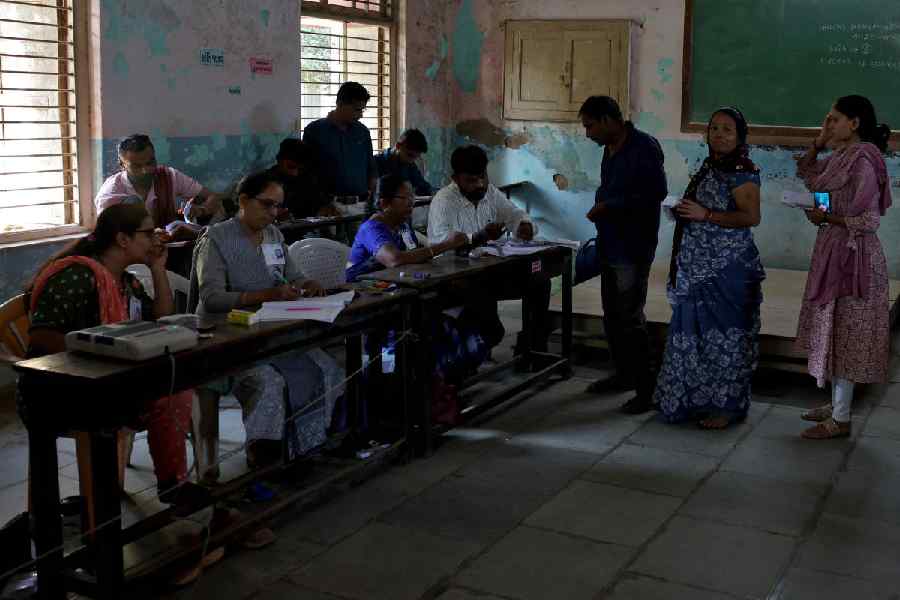
Banyan saplings sprouting from the building Telegraph picture
The home of the “father of Indian statistics”, Prashanta Chandra Mahalanobis, is crying out for repairs and restoration.
Named by Tagore, Amrapali — a modest two-storey house on the Indian Statistical Institute’s campus along BT Road — was where Mahalanobis lived and worked for a part of his life.
The building has chunks of concrete coming off. The building wears a patina of fresh paint but there are cracks and fissures and banyan saplings sprouting from nooks and crannies.
Originally an old garden house with a pond overlooking it, Mahalanobis bought Amrapali and remodelled it along the lines of Udayan, Tagore’s home in Santiniketan.
In fact, the statistician and his wife Nirmal Kumari, who shared a special relationship with Tagore, had two of the best rooms in Amrapali prepared for the poet to stay.
By the time Mahalanobis completed his remodelling in 1940, the poet was too ill to come and live there.
The house, which has now been turned into PC Mahalanobis Memorial Museum and Archives, is part of the library of ISI, Calcutta.
It received an annual grant of Rs 17 lakh last year for salaries and daily administration. Any major repair work will require separate funds, chief librarian Kishor Satpathy said.
The Central Public Works Department (CPWD) has been called in to survey the building and start repairs.

A portion of the building with chunks of concrete coming off Telegraph picture
The CPWD, in its report to the institute, said: “The building is of typical brick masonry structure and has been extended in phases. The structure is showing problems because of ageing and non-engineered maintenance.”
When asked if specialists from the Archaeological Survey of India should be entrusted with repairing a house of such historical stature, Satpathy said: “ASI had been approached but it cannot work on a house that is not listed as a national monument.”
Amrapali is under the ISI. Museologist Sachindranath Bhattacharya said: “The house should be repaired without delay. It is in a dilapidated state.”
Various sections have been added during remodelling like a bathtub under a staircase.
Nirmal Kumari’s bath with coloured designed tiles was also a remodelled work. Panels of sheetalpati on the walls of the house that acted as a natural air conditioner might have been added.
While the ground floor houses the galleries on Mahalanobis’s life and work, the first floor has been preserved the way the couple lived in it, complete with furniture, paintings, and personal belongings.
A Nandalal Bose sketch, which has faded, B.R. Panesar’s portrait of Ronald Fisher are among the collection.
The first couple in statistics had luminaries both from India and abroad as guests, including British statistician Ronald Fisher, scientist J.B.S. Haldane, Andrey Kolmogorov, Nobel laureate Irene Curie, Jawaharlal Nehru, and Rajendra Prasad.










